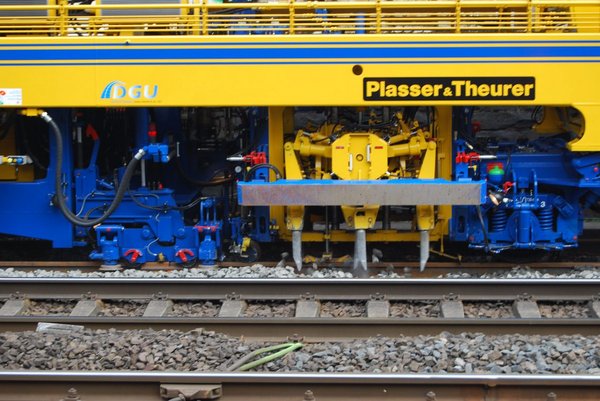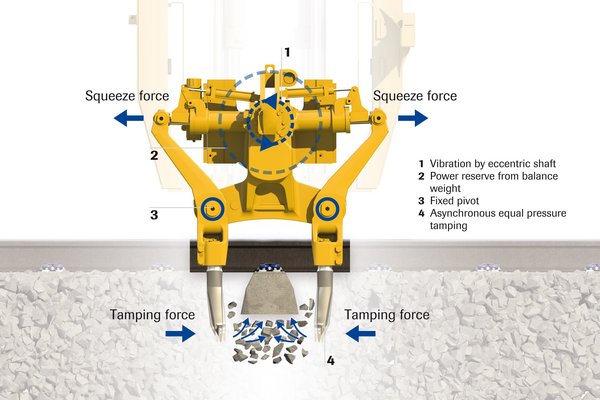Faster to higher quality:
Safe and comfortable train operations are only possible on tracks lying in the correct geometrical position. One of the first machines that made it possible to produce sustainable track geometry quickly and reliably were built by Plasser & Theurer. The hydraulic non-synchronous constant pressure tamping principle – which is still the method most widely used today – was developed by Plasser & Theurer to keep the tracks in the correct position.
The thousands of levelling, lifting, lining, and tamping machines operating all over the world offer a unique selection to meet the individual requirements of the operators. The main categories of tamping machines include standard railway vehicle design for tracks and turnouts, self-loading and road-rail tamping machines. and lightweight tamping machines. Within these categories, there are machines built as special models to address specific track conditions, including full sound insulation, spot fault elimination, tamping tracks with sharp curves, tight clearance gauges or live rails, and machines for different track gauges and clearance gauges.
Why tamp?
When a train travels over a track, it generates enormous forces. The entire track, consisting of rails, ties and ballast, is an elastic system that settles over time. Over the long term this high stress results in deterioration of the track geometry. This can lead to anomalies, which means that the ideal geometry of the track is no longer assured, and it becomes necessary to impose temporary speed restrictions.
To avoid such a situation, tracks should be maintained at regular intervals – this includes levelling, lifting, lining and tamping. This ensures that the ideal geometry of the track is restored and consequently a safe train operation.
Tamping machines restore the ideal track position. Before they insert into the ballast, they correct the longitudinal level and alignment of the track panel by lifting, lining and levelling. Then the tamping tools penetrate the ballast bed and fill and compact the ballast underneath the ties. This is how the machine produces an ideal ballast bed with perfectly aligned rails on top.
Two factors are decisive here. Firstly, all tamping tools work with the same pressure; and secondly, the tamping tools vibrate with the ideal frequency of exactly 35 Hz and an amplitude of 5-6 mm. This directional, linear vibration combined with the non-synchronous tine movement produces a homogeneously compacted ballast bed and a sustainable result.


